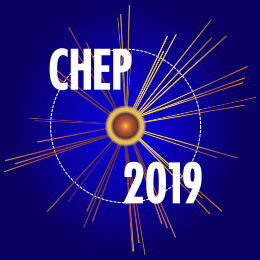Speaker
Description
The JUNO (Jiangmen Underground Neutrino Observatory) experiment is a multi-purpose neutrino experiment designed to determine the neutrino mass hierarchy and precisely measure oscillation parameters. It is composed of a 20kton liquid scintillator central detector equipped with 18000 20’’ PMTs and 25000 3’’ PMTs, a water pool with 2000 20’’ PMTs, and a top tracker. Monte-Carlo simulation is a fundamental tool for optimizing the detector design, tuning reconstruction algorithms, and performing physics study. The status of the JUNO simulation software will be presented, including generator interface, detector geometry, physics processes, MC truth, pull mode electronic simulation and background mixing. This contribution will also present the latest update of JUNO simulation software, including Geant4 upgraded from 9.4 to 10.4, and their performance comparison. Previous electronic simulation algorithm can only work for central detector, a new electronic simulation package is designed to enable joint simulation of all sub-detectors by using the Task/sub-Task/Algorithm/Tool scheme provided by SNiPER framework. The full simulation of optical photons in large liquid scintillator is CPU intensive, especially for cosmic muons, atmospheric neutrinos and proton decay events. For proton decay, users are only interested in the proton decay events with energy deposition between 100MeV and 700MeV, number of Michel electrons larger than 0, and the energy of Michel electron larger than 10MeV. Only 10% of the simulated proton decay events meet these requirements. We made some improvements on simulation procedure to enable doing full optical photon simulation only on some pre-selected events and reduce a lot of computing resources. A pre-simulation without optical photon simulation is carried out firstly, with all the Geant4 steps and other necessary MC truth information saved. Then a pre-selection based on MC truth information can determine which event need to be full simulated with optical photon processes activated and the G4Steps as input. This simulation procedure and relative interfaces can also be used for MPI or GPU based muon events full simulation.
| Consider for promotion | No |
|---|
